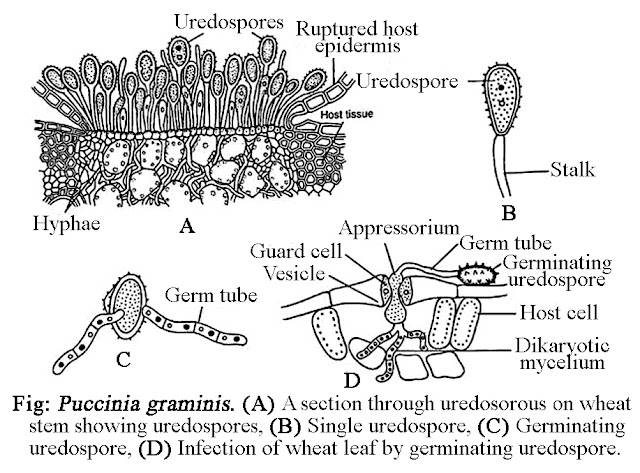EUPHORBIACEAE
1. SYSTEMATIC
POSITION:
Bentham
& Hooker
Division: Phanerogames (Seed Plants)
Class:
Dicotyledones
Sub-class: Monochlamydeae
Series:
Unisexualies
Family: Euphorbiaceae
2. MORPHOLOGICAL
CHARACTERS:
Habit
– Mostly annual or perennial herbs, aromatic.
Leaves
– Alternate or sometimes opposite, simple or rarely compound, stipulate,
hairy and sometimes replaced by glands, hairs and thorns.
Inflorescence
– Variable, often racemose and subsequent ones cymose or all cymose.
Characteristic inflorescence is cyanthium.
Perianth
– Tepals 3-5 or 0, green and rarely petaloid, disc entire or variable
number of glands.
Androecium
– Stamens 1-many, filaments branched or connate in many bundles, anther
dithecous.
Gynoecium
– Carpel 3, syncarpous, ovary 2-4 locular, superior, ovules 1 to 2 in each
loculus, placentation axile, style 3, each bifid, stigma 6.
Fruit
– Usually schizocarpic, regma splitting into 3 cocci, rarely drupe, capsule
or nut.
3. FLORAL
FORMULA: Male
flower: ⊕♂P3-5 or (5+5), A1-α
Female Flower: ⊕♀P3-5 or (5+5), G(3) or more
Female Flower: ⊕♀P3-5 or (5+5), G(3) or more
4. COMPARATIVE SYSTEMATIC POSITION AND
AFFINITIES:
Euphorbiaceae is
closely allied to the members of the order Malvales. This family is also
related to the members of the order Gereniales and Sapindales on account of the
nature of ovules. It is related to the family Sterculaceae in particular due to
the presence of monoadelphous stamen, rudiments of stamens and carpels,
androphore and gynophores occasionally and the nature of embryo.
It
has been suggested that the Euphorbiaceae arose from the Malvales. The members
of Euphorbiaceae seems to be highly specialized in the presence of reduced flowers
in many, flower like inflorescence (Cyathium) in Euphorbia and some other genera and milky latex.
5. ECONOMIC IMPORTANCE:
1. The bio-diesel crop Jatropa curcus belongs to this family.
2. The rubber of commerce is
obtained from the species of Hevea like H. brasilensis.
3. Ricinus communis is the source of castor oil.
4. Cultivated ornamental plants are Codiaeum variegatum, Pionsettia pulcherrima,
Acalypha hispida, A. wilkesiana, etc.
5. Plants with medicinal values are Croton spp., Acalypha indica, etc.
6. The tuberous root of Manihot utilisima is the source of
starch.
*************




Comments
Post a Comment